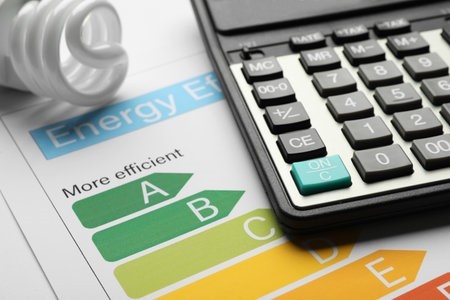
Image credit: 123RF
Understanding and effectively managing energy consumption within small to medium enterprises (SMEs) can result in significant cost savings, improved operational efficiency, and reduced environmental impact.
The path to energy efficiency is a strategic imperative and a competitive advantage for SMEs in today’s eco-conscious market. The initial cost of implementing energy-efficient measures may seem daunting; however, the long-term financial and environmental benefits outweigh these initial investments.
Obstacles Along the Way
SMEs face numerous challenges when addressing energy inefficiencies within their operations. One significant hurdle is the limitation of resources, as SMEs often operate within tight budgets, making it difficult to allocate funds towards energy-efficient technologies or conduct comprehensive energy audits. Additionally, there’s a prevalent lack of awareness among SMEs regarding the benefits of energy efficiency and the availability of relevant solutions. This lack of understanding may lead to underestimation of potential savings or ignorance of government incentives and support programs to promote energy efficiency.
The complexity of energy solutions poses another obstacle for SMEs. Implementing energy-efficient measures requires a certain level of expertise and understanding of energy systems and technologies. The upfront costs associated with energy-efficient upgrades can be prohibitive for SMEs with limited capital despite the long-term savings potential. The challenge is compounded by resistance to change from employees or management, as well as the presence of multiple competing priorities within the business.
Access to information and expertise is also a significant barrier for SMEs seeking to improve energy efficiency. Without reliable information and expert guidance, decision-making becomes uncertain, and there is a risk of investing in inefficient or unsuitable solutions. Regulatory compliance further complicates matters, as SMEs may struggle to navigate complex energy efficiency regulations without the necessary resources or expertise.
Tenant-landlord dynamics can also hinder energy efficiency efforts for SMEs, mainly when operating in rented spaces where control over building systems or infrastructure may be limited. This lack of control can make implementing energy-efficient measures challenging without landlords’ cooperation.
Tackling these barriers is not impossible. With guidance and funding, SMEs can pursue strategies and actions to implement energy-efficient practices within the organization.
Domestic Funding
In 2023, the US Department of Energy (DOE) announced $72 million in funding to support small businesses in advancing scientific research, clean energy, and climate solutions. The budget, allocated to 296 projects across 44 states, covers various topic areas, including renewable energy, nuclear energy, cybersecurity, advanced materials and manufacturing, microelectronics, and artificial intelligence.
US Secretary of Energy Jennifer M. Granholm emphasized the pivotal role of small businesses in driving progress, stating that they serve as a bridge between scientific discovery and commercial application. Through programs like the Small Business Innovation Research (SBIR) and Small Business Technology Transfer (STTR), the DOE aims to translate breakthroughs into tangible products and services that benefit the nation’s economy and society.
International Community
In Ireland, the government offers grants and resources to help businesses reduce energy bills and carbon emissions. Steps include appointing an Energy Lead, reviewing energy use, making an energy reduction plan, and acting quickly on recommendations. Various grants and programs support energy efficiency, such as the Energy Efficiency Grant, Climate Toolkit 4 Business, SEAI Energy Academy, and Energy audits. Other initiatives like the Climate Ready Program and Green Transition Fund aid in sustainability efforts. Funding options include the Growth and Sustainability Loan and Ukraine Credit Guarantee schemes.
The EU provides funding opportunities for SMEs through programs like the Connecting Europe Facility (CEF) and various EU funding initiatives. SMEs can access grants and loans for energy-related projects from organizations such as the European Investment Bank (EIB) and the European Regional Development Fund (ERDF), aimed at promoting sustainable development and reducing regional disparities across EU member states.
Key Strategies
It’s essential to conduct a comprehensive energy audit to identify inefficiencies and prioritize improvements. The audit encompasses analyzing energy bills, inspecting equipment and facilities, and gathering employee insights regarding energy consumption patterns.
Once areas for improvement are identified, the next step is to implement efficient lighting solutions. This includes transitioning to LED lighting, incorporating occupancy sensors and timers for automated lighting control, and optimizing the utilization of natural light by strategically placing workstations and adjusting window treatments.
Optimizing HVAC systems, including regular maintenance, upgrading to energy-efficient equipment such as high-efficiency furnaces and air conditioners, and deploying zoning systems to tailor temperature settings based on occupancy patterns, are all effective strategies for reducing energy costs.
Regarding equipment updates and efficiency, SMEs should consider replacing outdated appliances and machinery with Energy Star-certified models and investing in energy-efficient technologies like variable speed drives and power factor correction devices.
Behavioral change initiatives play a significant role in fostering a culture of energy conservation within the organization. This involves educating employees about the importance of energy conservation, providing training on best practices for reducing energy usage, and implementing energy-saving policies to encourage active participation.
SMEs must prioritize closely monitoring the effects of implemented measures. This goes beyond merely checking energy bills; it necessitates thorough examination of data from energy monitoring systems. Analyzing and interpreting this data can reveal additional inefficiencies and opportunities for enhancement, offering insights that inform more informed decisions. This approach guarantees that energy efficiency measures aren’t merely a one-off endeavor but an ongoing process of refinement, continuously optimizing operations over time.
Moving Forward
Understanding and effectively managing energy consumption within SMEs can lead to significant cost savings, improved operational efficiency, and reduced environmental impact. Despite facing obstacles such as limited resources, lack of awareness, and regulatory challenges, SMEs can overcome these barriers with guidance and funding. Initiatives like domestic funding programs, international grants, and key strategies such as comprehensive energy audits, efficient lighting solutions, HVAC optimization, equipment updates, and behavioral change initiatives can drive progress toward energy efficiency.
Source: https://www.environmentenergyleader.com/2024/04/empowering-small-to-medium-enterprises-towards-energy-efficient-operations/

